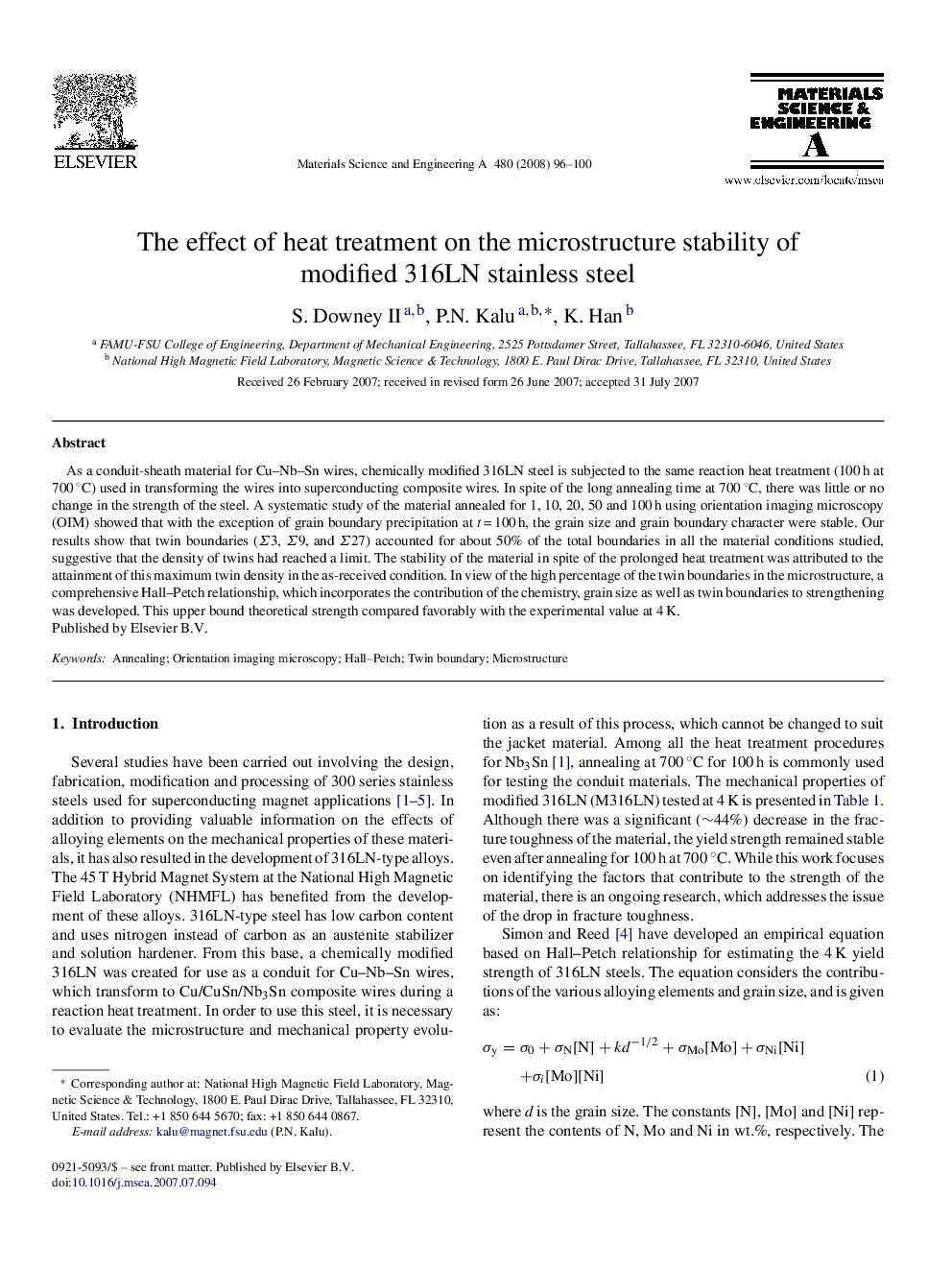| Article ID | Journal | Published Year | Pages | File Type |
|---|---|---|---|---|
| 1582631 | Materials Science and Engineering: A | 2008 | 5 Pages |
As a conduit-sheath material for Cu–Nb–Sn wires, chemically modified 316LN steel is subjected to the same reaction heat treatment (100 h at 700 °C) used in transforming the wires into superconducting composite wires. In spite of the long annealing time at 700 °C, there was little or no change in the strength of the steel. A systematic study of the material annealed for 1, 10, 20, 50 and 100 h using orientation imaging microscopy (OIM) showed that with the exception of grain boundary precipitation at t = 100 h, the grain size and grain boundary character were stable. Our results show that twin boundaries (Σ3, Σ9, and Σ27) accounted for about 50% of the total boundaries in all the material conditions studied, suggestive that the density of twins had reached a limit. The stability of the material in spite of the prolonged heat treatment was attributed to the attainment of this maximum twin density in the as-received condition. In view of the high percentage of the twin boundaries in the microstructure, a comprehensive Hall–Petch relationship, which incorporates the contribution of the chemistry, grain size as well as twin boundaries to strengthening was developed. This upper bound theoretical strength compared favorably with the experimental value at 4 K.
